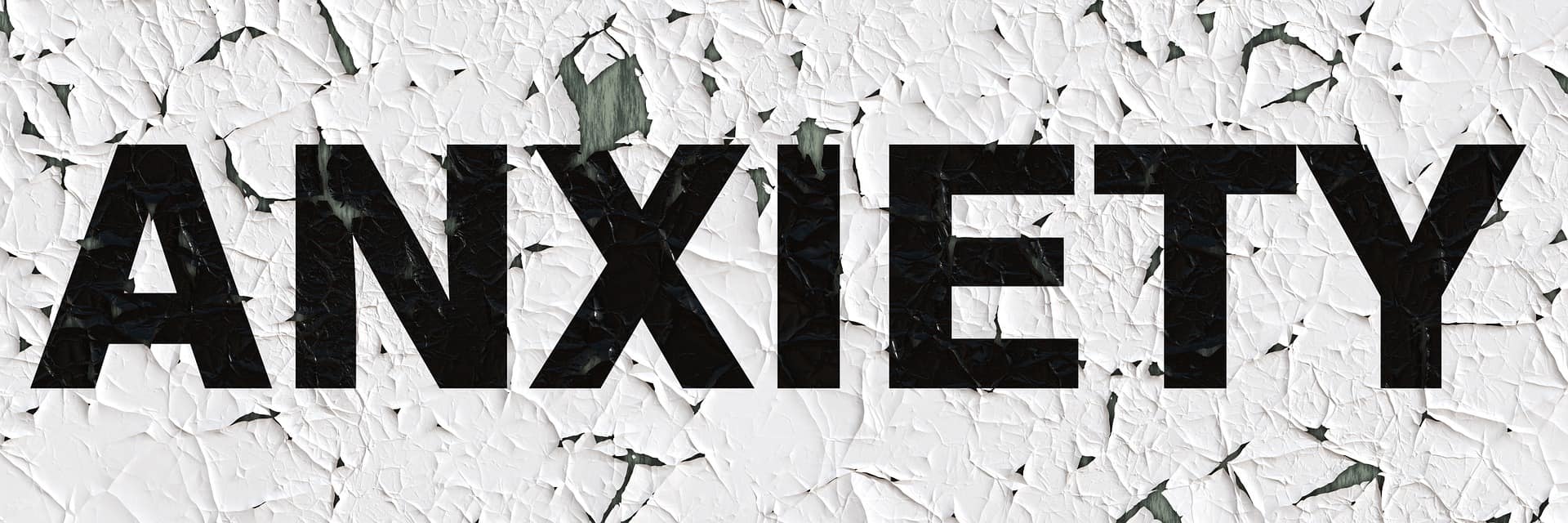
One question we get a lot is what is the best weed for anxiety? Marijuana has been known to help with various conditions including pain, insomnia, depression, nausea, appetite, glaucoma, inflammatory bowel disease, migraines, inflammation, psychosis, seizures, and more. Marijuana is known for its calming and relaxing properties, which makes it a great candidate for treatments of anxiety.
Marijuana Laws in The United States
It is important to address marijuana legality in the United States before considering using weed as a remedy for anxiety. Although the recreational use of marijuana is still not legalized in all states in the United States, medicinal marijuana is legal in an increasing number of states. Medical marijuana must be prescribed by a licensed physician to be legal at a state level.
It is important to research your state’s laws about possession and use of marijuana. Some states provide marijuana with a fully or partially legal status, and states differ in their laws associated with weed. Even if your home state allows recreational use, if you go to another state and do not have a medical prescription for it, you could find yourself in legal trouble.
THC vs. CBD strains
THC (Tetrahydrocannabinol) and CBD (Cannabidiol) are the two primary natural compounds found in the cannabis plant. As molecules, they both bind to cannabinoid receptors and result in the psychoactive and physical effects associated with smoking weed. As THC or CBD bind to your cannabinoid receptors, they release neurotransmitters in your brain. Neurotransmitters are responsible for the chemical messages sent between nerve cells.
Although their chemical structures are quite similar, the little molecular differences between THC and CBD result in the compounds’ differing effects. THC and CBD bind to different types of cannabinoid receptors in the brain. THC binds with a type of receptor that produces a euphoric high. In contrast, CBD binds with a different, non-euphoric cannabinoid receptor. The euphoric high commonly experienced by THC users can be relaxing to some but can have adverse effects on others. These negative side effects can prove ineffective or even damaging in addressing anxiety. Therefore, for users who are sensitive to THC, CBD is a favorable strain. However, most strains of marijuana contain both chemicals. As such, deciding on a strain with a proper THC to CBD balance is essential.
Both marijuana and hemp contain both THC and CBD. However, marijuana is generally known to have a higher concentration of THC, while hemp has a higher concentration of CBD.
Marijuana users who use weed to treat their anxiety have differing views and preferences when it comes to THC and CBD. Some solely stick to CBD to enjoy the benefits of weed, but without the high. Others prefer THC’s euphoric effects. CBD is also known to cause little to no side effects, even in large doses. We will discuss THC’s side effects in the following section.
Possible Side Effects
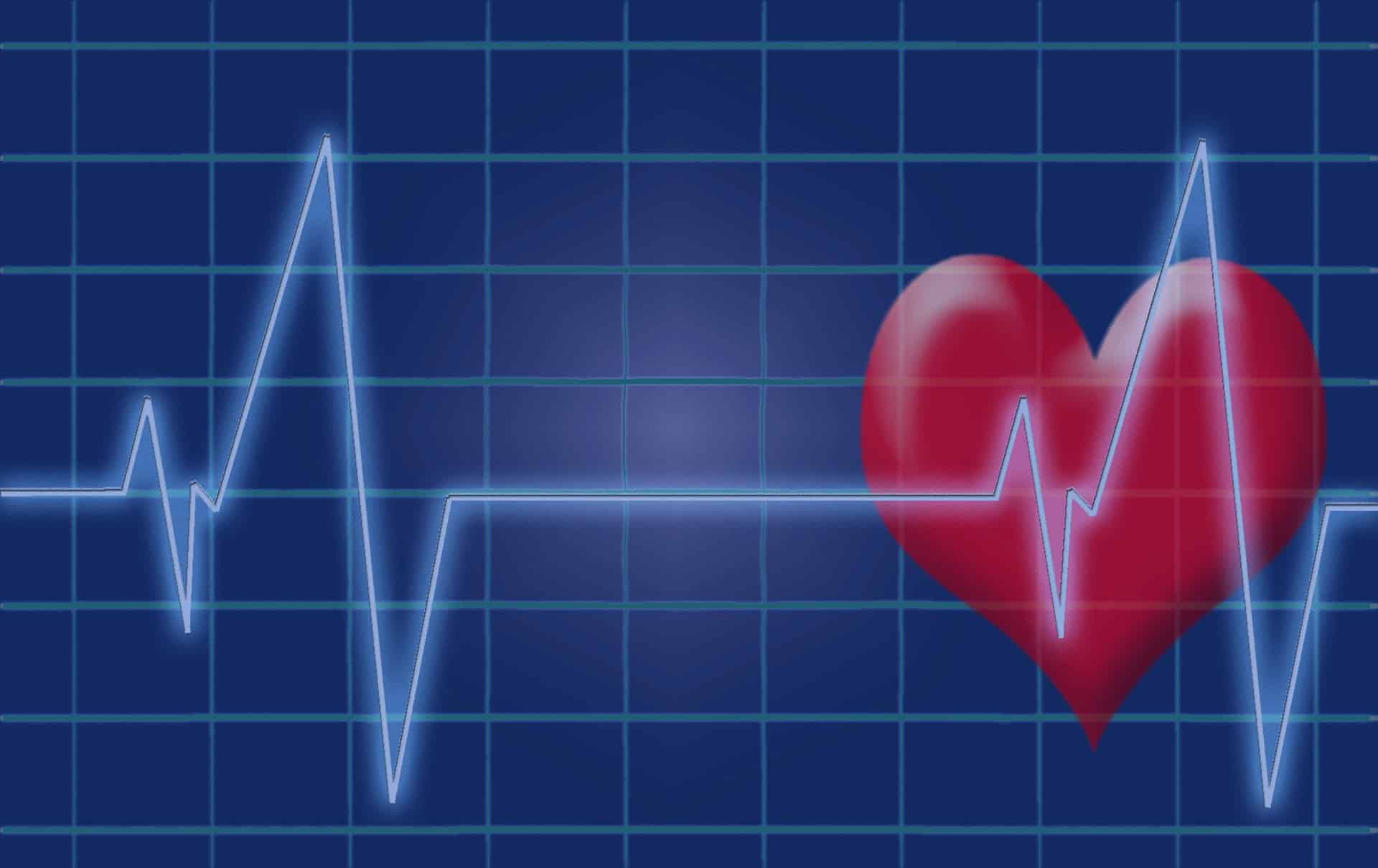
Like all medications, supplements, and drugs that you take, side effects can occur and differ from person to person. Marijuana is no different. THC dominant marijuana can cause certain side effects due to its psychoactive properties (the ones that produce the euphoric high), but these usually subside in a short period of time. However, increased marijuana use can correlate with increasingly severe side effects. Any sort of medical concerns should be discussed with your doctor, especially if you are already taking certain medications that could have interactions with marijuana. These side effects include:
- Increase in heart rate
- Dry mouth
- Red eyes
- Memory loss
- Coordination problems
- Slow reaction times
Research suggests that high THC consumption could lead to long-term negative psychiatric effects or an increased risk of some psychiatric disorders. These risks are particularly relevant in adolescents, whose brains are still forming. However, more research must be done before concrete conclusions can be drawn.
Marijuana is generally considered to have a nonexistent fatality rate. Fatal cases involving marijuana can generally be traced back to the presence of another drug, or an unexpected reaction between drugs within the body.
Weed in Drug Tests
It is important to consider if any job or role you have in your life requires periodic or random drug testing. THC and CBD stay in your system for up to 30 days for the regular marijuana smoker. They can appear on a drug test for days to weeks after you use marijuana. Many factors contribute to a marijuana test result. Frequency of smoking, the quantity of marijuana consumed at a time, and the type of drug test itself are all relevant. A drug test that uses a saliva sample won’t detect THC after about a day. However, a urine, blood, or hair sample could detect THC for weeks after use. A drug test that uses a hair sample can detect weed use after 90 days!
Using Weed for Anxiety

Medical professionals acknowledge the existence of an entire spectrum of anxiety disorders. Many Americans have experienced an anxiety disorder sometime in their life. Someone can have feelings of anxiety occasionally, or nearly every day. This can impact all aspects of that person’s life, including their job, school, sleep, and interpersonal relationships.
Anxiety can have a wide variety of symptoms including:
- Nervousness
- Rapid heart rated
- Rapid breathing
- Muscle twitching or tension
- Insomnia or fatigue
- Digestive problems
Many of these symptoms of anxiety are the very ones’ marijuana works well to alleviate. This makes marijuana a medication particularly well-suited to this problem.
There are many strains of weed, but not all are effective in treating anxiety. As a general rule, strains of marijuana with high concentrations of CBD, and lower doses of THC, are frequently associated with anxiety relief.
The Best Weed for Anxiety
Marijuana is categorized by the strain between sativa, indica, and hybrid. When it comes to indica versus sativa, indica is usually the best type of weed for anxiety. Indica effects are known to be more sedative, inducing feelings of tranquil relaxation, and sleepiness. Because of this, most of our recommendations for anxiety will be indica or hybrid strains.
Here are some strain recommendations to help treat anxiety. They are divided by CBD, THC, or hybrid dominance, and in alphabetical order within their dominant category. In addition, they are further divided into sativa or indica strains, so you can find your perfect strain for anxiety.
CBD Dominant
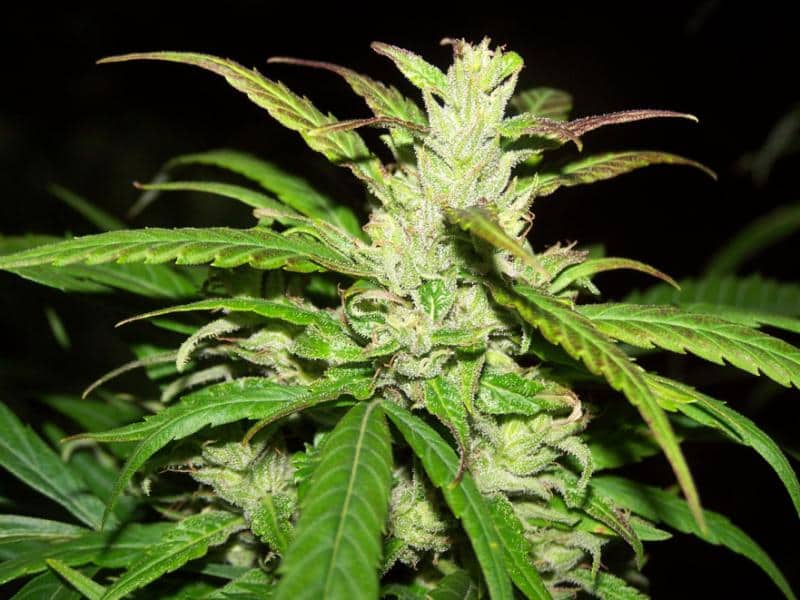
Photo from Wikipedia Commons
ACDC (CBD dominant) – Sativa Strain
- A soothing strain that causes relaxation without a THC high
- Herbal and pine aromas
- Very common strain for treatment of anxiety
Harlequin (CBD dominant) – Sativa Strain
- Herb and pine taste
- Relaxing without being too sedating
- No THC high
Harle-Tsu (CBD dominant) – Indica/Sativa Hybrid
- Cross between Harlequin and Sour Tsunami strains
- Herbal and fruity flavors
- Very relaxed and happy feelings
Remedy (CBD dominant) – Indica Strain
- Cross between Cannatonic and Afghan Skunk strains
- A very calming strain with few side effects
- Herbal and piney flavors
- Used to treat seizures, pain, inflammation, and anxiety
THC dominant
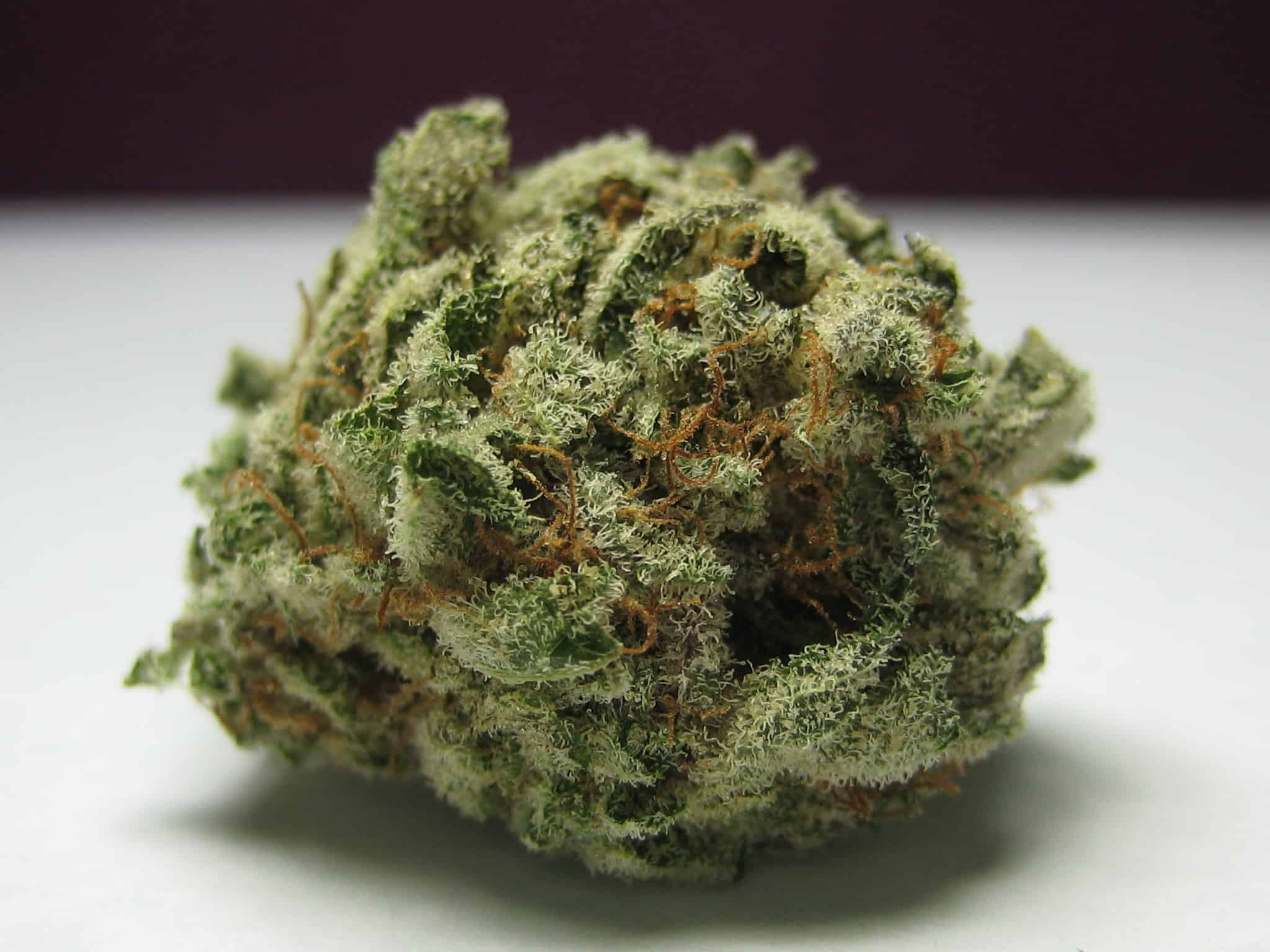
Photo credit: Nickel Bag of Funk https://www.flickr.com/photos/nickel_bag_of_funk/3651259994
Blackberry Kush (THC dominant) – Indica Strain
- An extremely relaxing strain
- Berry, herbal and citrus flavors
- Named for its dark purple buds and berry taste
- Used for pain management, insomnia, and anxiety
Cherry Pie (THC dominant) – Indica/Sativa Hybrid
- Cross between Granddaddy Purple and Durban Poison strains
- Cherry, herbal and peppery flavors
- Equal parts energizing and calming
Granddaddy Purple (THC dominant) – Indica Strain
- A very calming strain, not energizing. Can have sleep-inducing effects
- Herbal and peppery aromas
- Treats stress, pain, anxiety, and insomnia
Jack Herer (THC dominant) – Sativa Strain
- More energizing and uplifting strain
- Fruity and peppery flavors
- Popular strain for users who experience stress, depression, and anxiety
Jillybean (THC dominant) – Indica/Sativa Hybrid
- Known as an upbeat and happy strain
- Herbal and peppery flavor
Northern Lights (THC dominant) – Indica Strain
- One of the most well-known and popular strains of weed
- Gives relaxed and euphoric feelings
- Herb and pepper aroma
- Useful for pain, anxiety, insomnia, depression, and more
Purple Urkle (THC dominant) – Indica Strain
- A very popular strain for many conditions, especially insomnia, pain, and anxiety
- Extremely relaxing and tranquilizing effects
- Herb and pepper flavor
Sour OG (THC dominant) – Indica/Sativa Hybrid
- Cross between Sour Diesel and OG Kush strains
- Happy, euphoric, and relaxing feelings
- Herb and citrus flavors
- Good for stress and anxiety
Strawberry Cough (THC dominant) – Sativa Strain
- More energizing than calming
- Reported strawberry, herb, and pine aroma
- Many users experience a coughing side effect
White Widow (THC dominant) – Indica/Sativa Hybrid
- One of the most famous strains worldwide
- Cross between Brazilian sativa landrace and South Indian indica
- Energizing, euphoric, happy and creative feelings
- Herb and peppery aromas
CBD/THC Hybrid
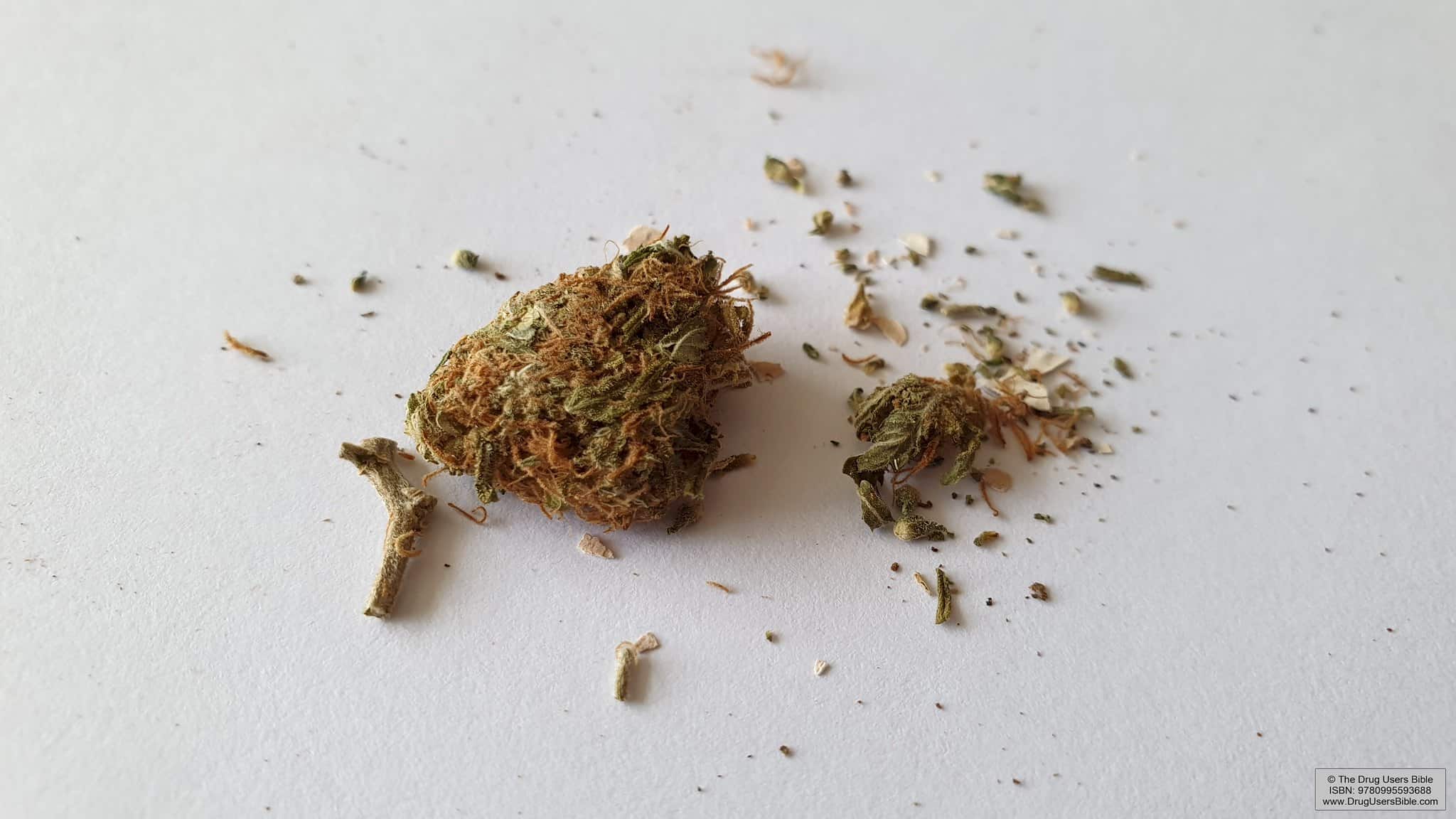
Photo credit: Dominic Milton Trott https://www.flickr.com/photos/157786281@N07/48242549556
Cannatonic (CBD/THC hybrid) – Indica/Sativa Hybrid
- Cross between MK Ultra and G13 Haze strains
- Relaxed, happy, euphoric feelings
- Herb and pine aroma
Lemon Garlic OG (CBD/THC hybrid) – Indica/Sativa Hybrid
- Relaxing
- Good for stress and anxiety
- Herb, pepper, and lemon citrus flavors
Pennywise (CBD/THC hybrid) – Indica Strain
- Cross between Harlequin and Jack the Ripper strains
- Herb and pine tastes
- Intensely relaxing, with happy and uplifting feelings
- Very popular for anxiety and pain
Routes of Consumption of Weed
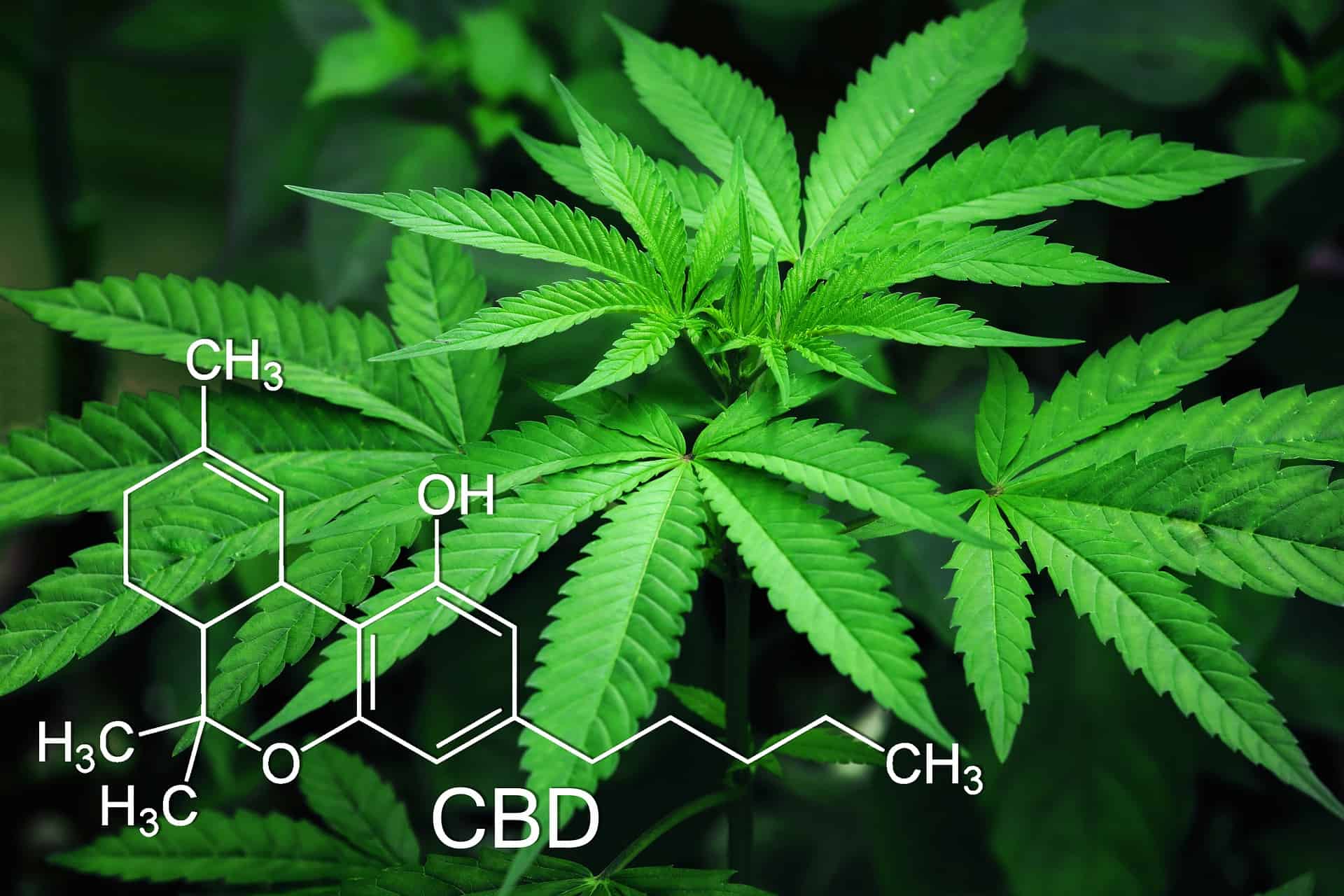
Some people may want to avoid smoking marijuana directly, due to asthma or other health concerns. There are various ways you can intake THC and CBD besides smoking. Here are some common methods of intaking marijuana:
- Pre-filled vape (filled with oil, good for beginners)
- Edibles (long-lasting effects, precise dosing when bought at a dispensary)
- Flower (smoke or vaporize, fast-acting)
- Topicals (easy application, localized)
- Dabs (fast-acting via inhalation)
- Capsules (filled with oil, easy for medication users)
- Tinctures (a dropper dispenses the oil underneath your tongue, fast-acting)
Where to start
Your physician is the best resource for any medical questions or concerns you have when it comes to marijuana and anxiety, and their effects on you and your body. If you don’t have a regular physician, it’s worth looking into one that is educated in medical marijuana, as not all doctors are. Employees at dispensaries (sometimes called “budtenders”) are also well versed on the subject and can give you good recommendations.
If your state law allows, it is useful to experiment with different strains to see what you prefer. The unique combination of flavors and aromas in each strain can impact your body’s receptiveness. First, it is useful to determine whether you favor CBD, THC, hybrid, or have no preference. If you only want to explore CBD options, you can then explore CBD strains with different flavors and go from there. Or, if you’d rather start from an indica vs. sativa stance, you could search for CBD dominant or THC dominant strains within the indica or sativa family. There are countless different strains, and they each have a different set of effects. If you have no idea where to start, start with CBD products. Their anxiety-relieving effects and general lack of side effects make a solid combination.
Although it can be daunting at first, starting with one or two choices will be a good starting point. Soon you will establish which strains you are most fond of, and which you want to stay away from. At that point, the wide variety of strains will become an asset and give you quite a bit of choice and room for customization.
Dosage is difficult to determine for someone who is just starting with marijuana. Some of the main factors to consider when determining dosage are body weight, metabolism, and the severity of your anxiety. This is also another reason to start with CBD- instead of THC-dominant strains. Higher dosages of CBD-dominant strains are generally associated with better anti-anxiety effects. No matter which you choose, it’s best to start small and work your way up to your tolerance level.
As the world gets more comfortable with the idea of marijuana as a legitimate medical treatment, more research will be done regarding the role of marijuana as a part of the solution to various conditions and diseases. Until then, there is a vast amount of information on the web and many resources and experts to talk to. Don’t be afraid to reach out when deciding where to start or what direction to go in. Just remember to stay safe and educated!
Disclaimer:
You knew it was coming, the text in this article is informational only and not intended to be legal or medical advice or recommendations in any way. Use this information as you will with your own discretion. The bottom line is – be safe, follow the rules, and enjoy some Mary Jane while you are in the Bicentennial State for your Rocky Mountain High!



